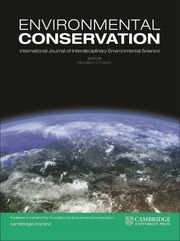No CrossRef data available.
Article contents
Effect of land-use changes on the space–time distribution of ant diversity in the south-western Brazilian Amazon
Published online by Cambridge University Press: 01 September 2025
Summary
The rapid advancement of satellite-based monitoring technologies and niche modelling present unprecedented opportunities to enhance conservation efforts, especially over large areas, yet their practical application in guiding conservation strategies remains limited. This study examines how land-use changes affect ant diversity in the Acre River basin, south-western Brazilian Amazon. Using niche modelling with climatic, environmental and land-use data, we examined species distributions for three ant guilds – forest specialists, generalists and open-habitat specialists – across 1985, 2019 and 2050. The results show that forest specialists are concentrated in the eastern regions but are projected to decline, while open-habitat specialists – dominant in the south-west – are expected to increase in distribution. Generalists displayed broader, stable distributions. These patterns highlight the critical role of forest conservation in preserving the diversity of forest-specialist species and the threat posed by Amazon forest conversion, and they point to the need for strategic landscape planning to mitigate deforestation impacts.
Keywords
Information
- Type
- Research Paper
- Information
- Copyright
- © The Author(s), 2025. Published by Cambridge University Press on behalf of Foundation for Environmental Conservation


